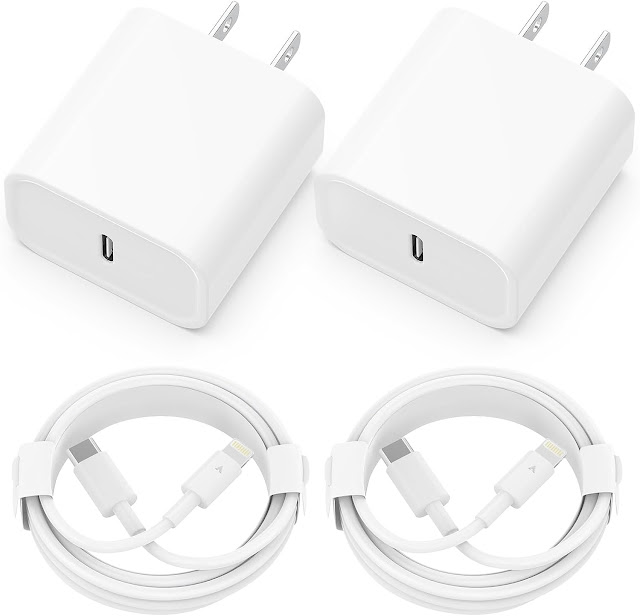The Evolution of iPhone Chargers: A Closer Look at Apple's Innovative Power Solutions
Introduction:
If you own an iPhone, you've likely used its charger
countless times. Have you ever wondered how these chargers have changed and
improved over the years? In this article, we will explore the fascinating
journey of iPhone chargers and the innovative solutions Apple has introduced.
The Original iPhone Charger:
The first iPhone, released in 2007, came with a relatively
simple charger. It consisted of a cable with a special "30-pin Dock
Connector" on one end and a USB power adapter on the other. While
functional, this charger had its limitations. The 30-pin connector was unique
to Apple, rendering it incompatible with other devices, and the cable's
durability left much to be desired.
Transitioning to Lightning:
Back in the annals of tech history, in the year 2012, Apple
ushered in a new era of connectivity when they unveiled the Lightning connector
alongside the groundbreaking iPhone 5. This marked a significant departure from
the 30-pin Dock Connector and brought several advantages. The Lightning
connector emerged as a technological marvel, boasting a sleeker design,
impeccable reversibility, and a robust durability that set it apart from its
predecessors. Additionally, it facilitated faster data transfers and paved the
way for new accessories and peripherals.
The Power Delivery Revolution:
With the iPhone 8 and iPhone X, Apple ushered in a new era
by supporting USB Power Delivery (USB-PD) technology. This innovation allowed
for fast charging, enabling users to reach a 50% battery charge in just 30
minutes. USB-PD also made it possible to charge multiple Apple devices,
including iPhones, iPads, and MacBooks, using the same charger, simplifying the
charging process even further.
Embracing Wireless Charging:
In 2017, Apple embraced wireless charging with the
introduction of the iPhone 8 and iPhone X. This shift was made possible through
the adoption of the Qi wireless charging standard. Users could now charge their
iPhones by placing them on compatible wireless charging pads, eliminating the
need for physical cables. Apple also introduced its own wireless charging pad,
AirPower, although it was later canceled.
MagSafe Charging:
In 2020, Apple unveiled MagSafe, a magnetic charging system
compatible with iPhone 12 and subsequent models. MagSafe chargers utilize
magnets to align with the phone's coils, ensuring efficient charging. This
technology also supports a range of MagSafe accessories, such as wallets and
cases that attach magnetically to the back of the iPhone.
Environmental Initiatives:
Apple has also taken steps to reduce its environmental
impact concerning chargers. In 2020, the company announced that it would no
longer include power adapters and EarPods in the iPhone box to minimize
electronic waste. This decision encouraged users to use their existing chargers
or purchase them separately, promoting sustainability.
Conclusion:
The evolution of iPhone chargers highlights Apple's
dedication to innovation, user experience, and environmental sustainability.
From the original 30-pin Dock Connector to the modern MagSafe technology, Apple
has consistently improved its charging solutions. As the iPhone continues to
evolve, we can expect even more innovations in the world of iPhone chargers,
making it easier and more convenient than ever to power our favorite devices.





Post a Comment